Cleaning tiles
Tiles are a favorite flooring choice in Malaysia due to their durability and ease of maintenance. To ensure your tiles remain in top condition, follow these effective cleaning tips tailored for different types of tiles commonly found in Malaysian homes.
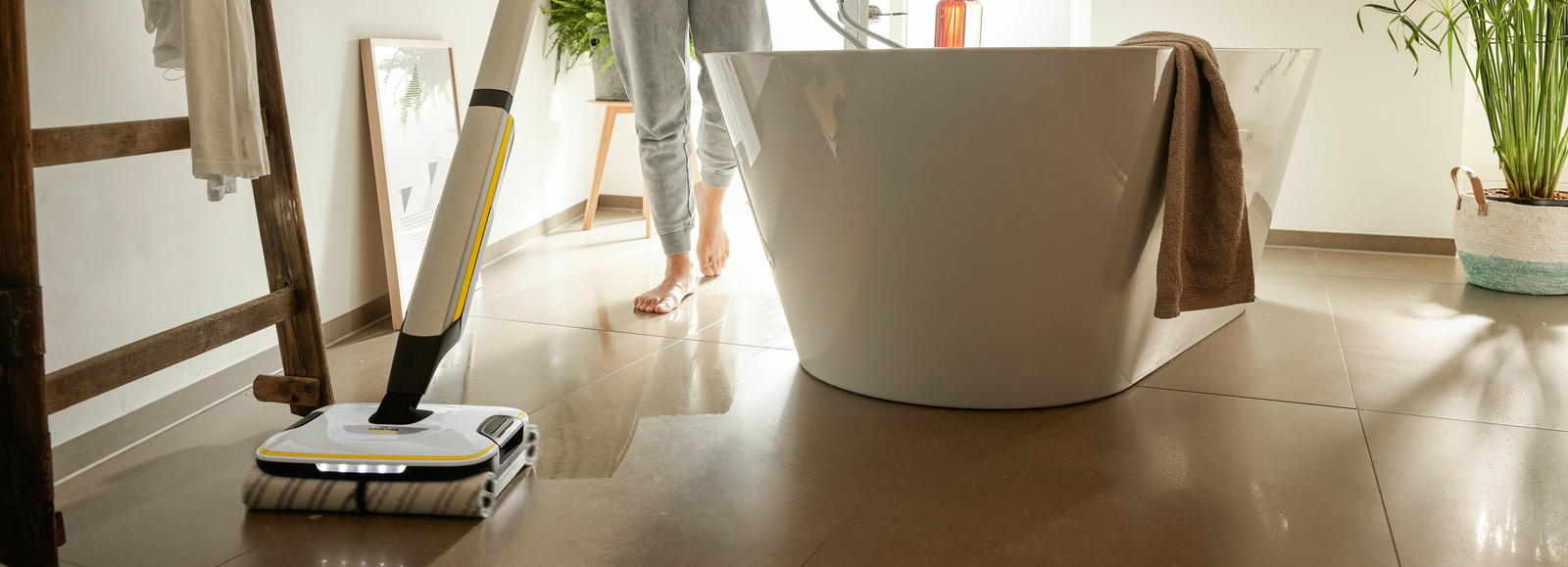
Cleaning different types of tiles correctly
There are countless types of tiles. To clean them in the most effective way, it is therefore important to first correctly identify the material of the tile. The most common types are ceramic tiles, such as fine stoneware tiles, glazed tiles, stoneware tiles, terracotta tiles and clinker tiles. The basic component of all commercially available tiles is clay which, depending on the type, is made up of different aggregates and burns at different temperatures. However, you occasionally also find natural and artificial stone tiles in private households, and this is where you have to take particular care with the cleaning process.
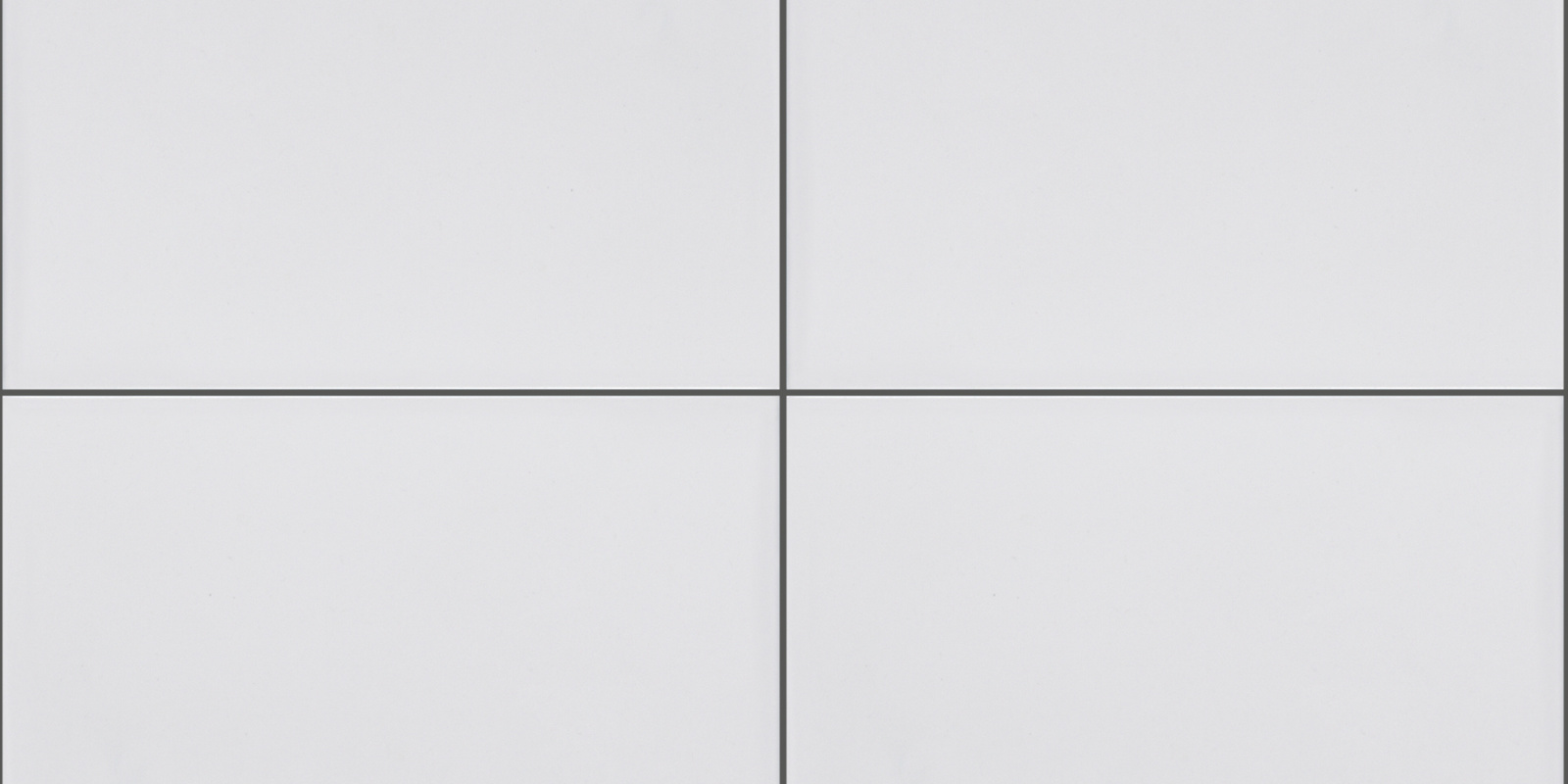
Glazed tiles
Glazed tiles are a popular choice in Malaysian homes due to their aesthetic appeal and ease of maintenance. Generally, these are stoneware tiles with a glass-like coating on the top layer, providing a smooth, closed surface and an almost infinite range of colors and textures. They are characterized by the different colors of the edge and top layer. Key features include:
- Glass-like Coating: Smooth surface and various textures
- Color Variety: Available in a wide range of colors
- Ease of Cleaning: Easy to clean with regular wiping
- Stubborn Stains: For tougher stains, use a mild detergent
- Minimal Care: Do not require any special care beyond regular cleaning
Thanks to their smooth surface, glazed tiles are usually easy to clean and maintain, making them an excellent choice for households.
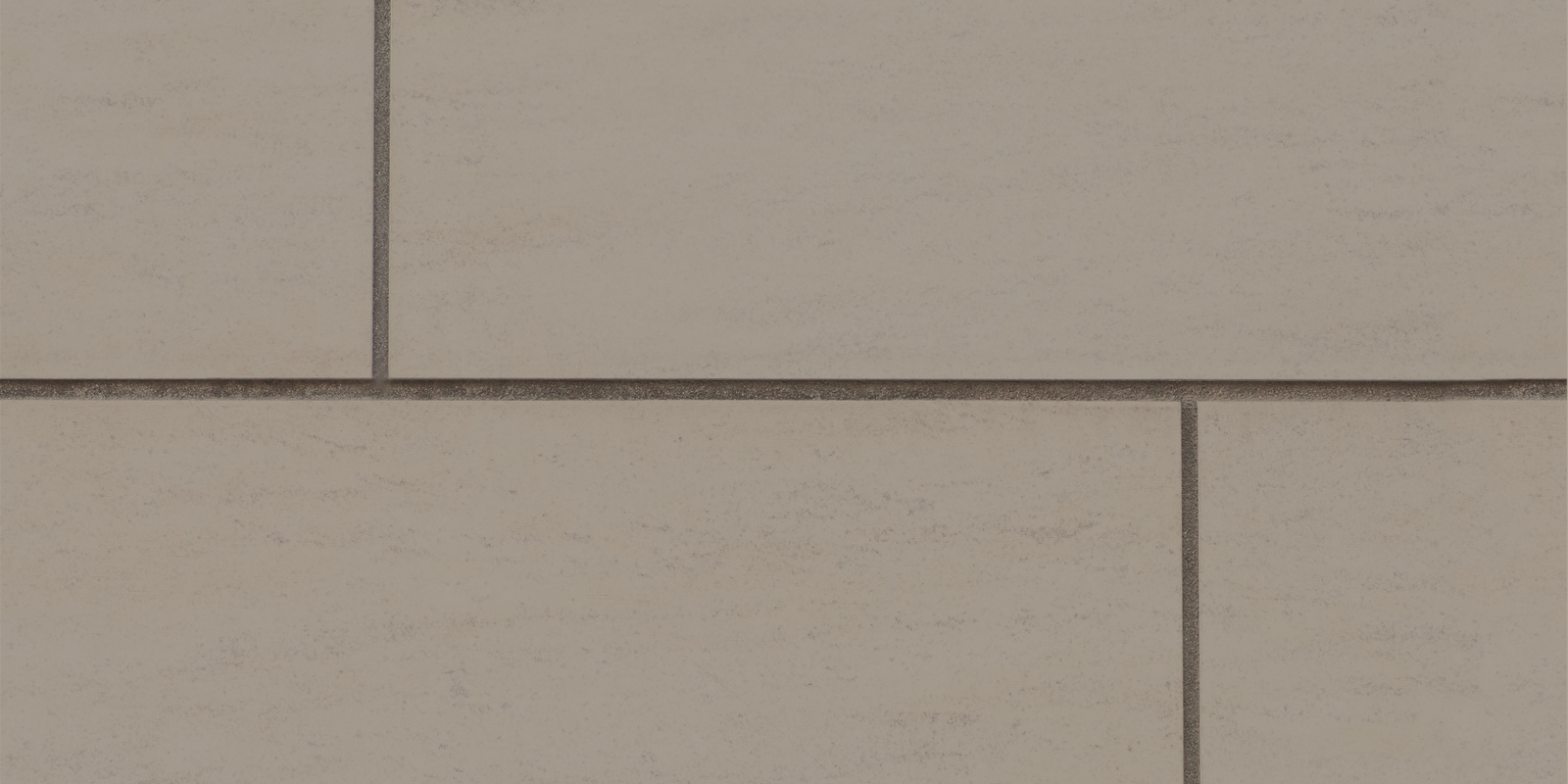
Fine stoneware tiles
Fine stoneware tiles are known for their durability and attractive finishes. Thanks to their robustness and visual appeal, these tiles are increasingly being laid throughout entire living spaces. Fine stoneware is available as silk-matt, high-gloss polished, with a structure (e.g. slate-look) or printed (e.g. wood-look). Key cleaning tips include:
- Cleaning Method: Best cleaned with microfibre cloths to reach into the microporous surface
- For structured tiles: wipe in both directions for thorough cleaning
- Chemical Resistance: Resistant to most alkalis, acids, and organic solvents
- Care Requirements: Requires no special care beyond regular cleaning
Fine stoneware tiles are usually solid-colored and look the same from all sides, except for printed designs. They do not need any additional care beyond proper cleaning. For optimal results, wipe lengthwise and crossways across the surface to achieve great cleaning depth.
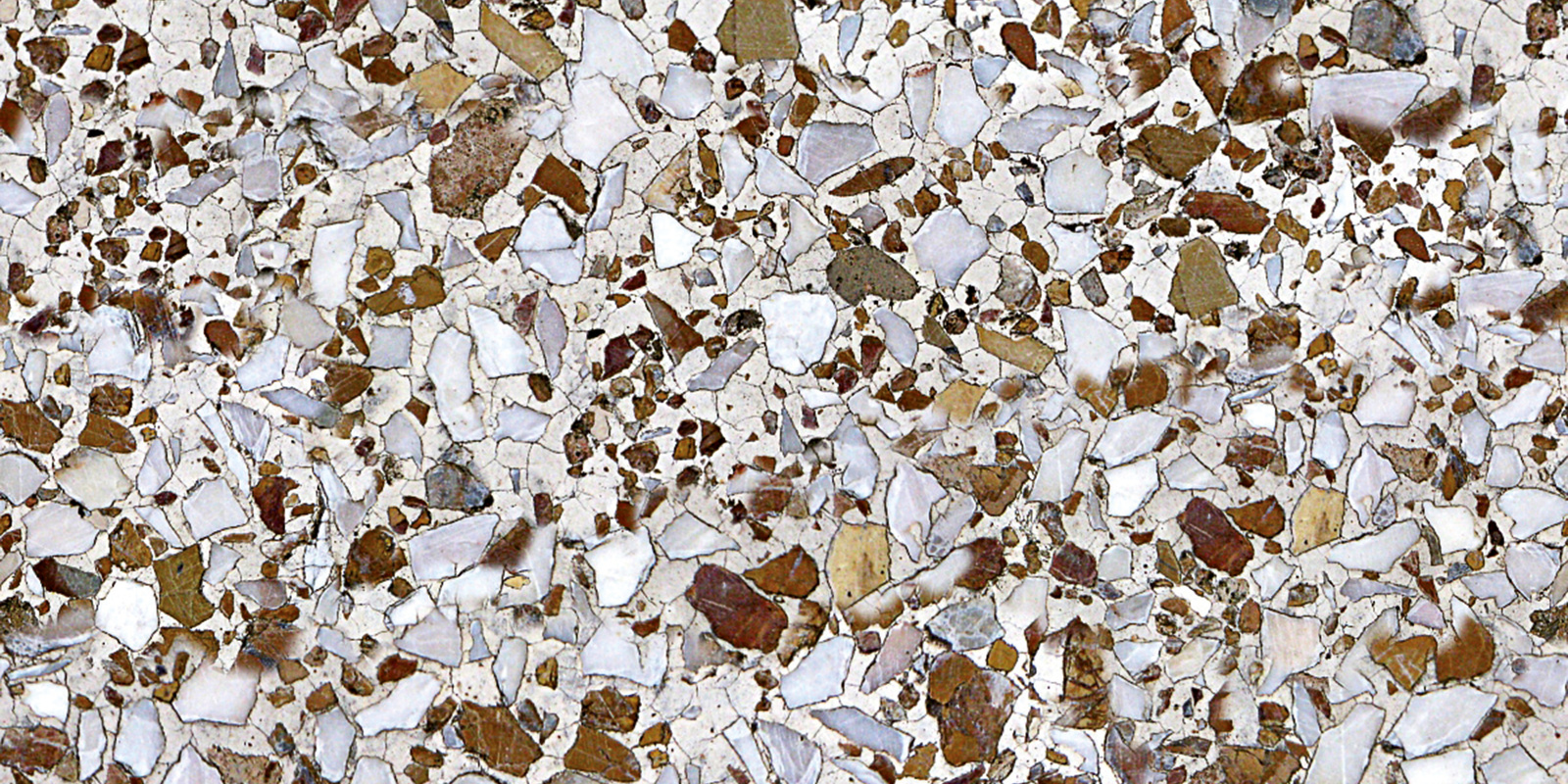
Natural and artificial stone tiles
Natural stones, such as granite, marble, Jurassic stone, and slate, are common in Malaysian homes. Artificial stones, made from mineral materials like cement or resin, include options such as artificial stone, exposed aggregate concrete, and Agglo marble. Cleaning tips include:
- Use of Acidic Detergents: Suitable for mineral dirt (e.g., rust, limescale, cement residue)
- Sensitivity Test: Apply a few drops of acidic cleaner in an inconspicuous area to check for reaction
- Cleaning Caution: Avoid acidic cleaners if foaming occurs, indicating sensitivity
To ensure safe cleaning, always perform a patch test with acidic cleaners on a small, hidden area to prevent potential damage.
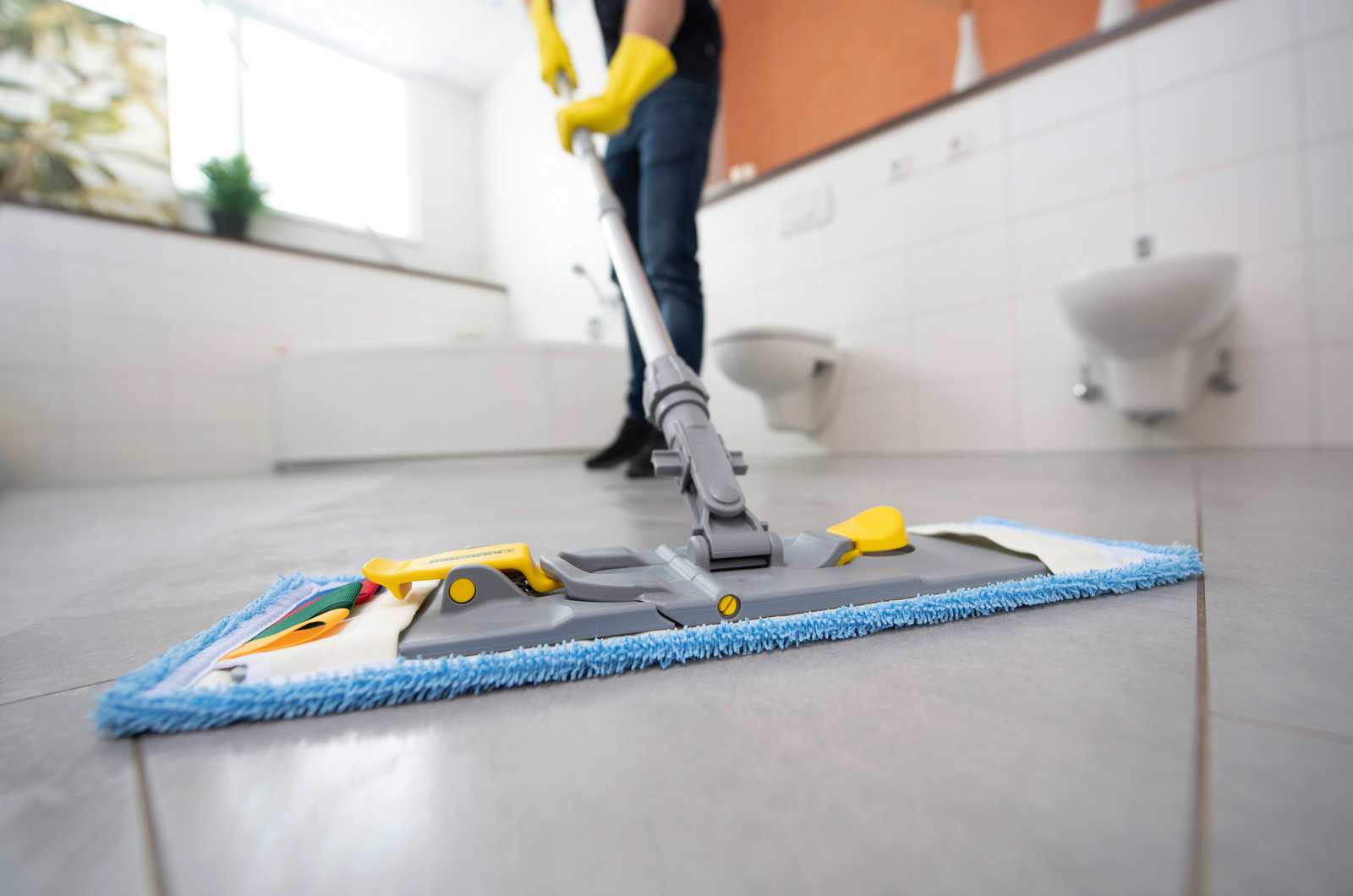
Cleaner Tiles in Just Two Easy Steps
Cleaner Tiles in Just Two Easy Steps
Achieve spotless tiles in your Malaysian home with this simple and effective two-step method:
1 STEP: Vacuum Cleaning:
- Use a standard vacuum cleaner to remove loose dirt such as dust and hair.
- For outdoor or heavily soiled areas like garages, a multi-purpose vacuum cleaner is ideal.
2 STEP: Wet-Wiping:
- Wet-wipe the surface with a floor wiper or mop.
- Regularly squeeze out the cloth to minimize dirt contact.
- Clean the edges first, then move from the farthest corner to the door in even strokes.
This method is quick and efficient, though stubborn stains might require additional effort.
Removing greying on tiles
If a tiled floor has been handled incorrectly for an extended period, for example, too much detergent or wipe care is used, this may lead to greying. This causes layers of dirt and detergent to form which, over time, lead to an unpleasant appearance. To remove this greying, the first cleaning cycles should only be carried out using warm water. If a foam head occurs on the dirty water during the cleaning process, this is a good sign that the old detergent residue has been removed. In this case, repeat the process until foam no longer forms. Alternatively, melamine sponges, also known as magic sponges, are a good option for removing greying.
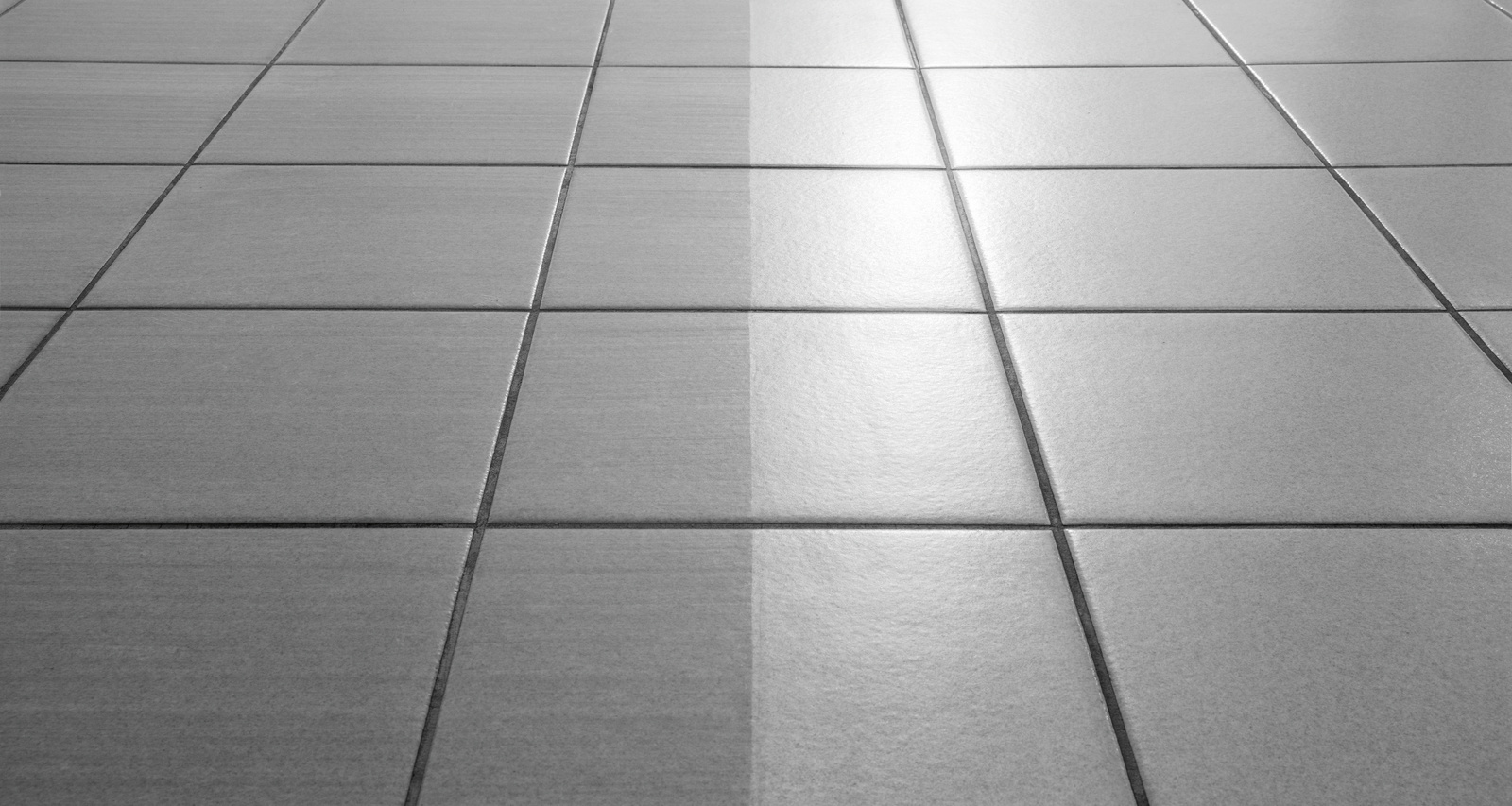
Expert tips
Regardless of whether or not there is greying, we recommend first processing a small area of the surface in an inconspicuous area and, after it dries, note the difference to the surface that has not been cleaned. If the brand of the floor covering is known, it is also worthwhile to take a look at the cleaning and care instructions from the manufacturer of the floor covering.
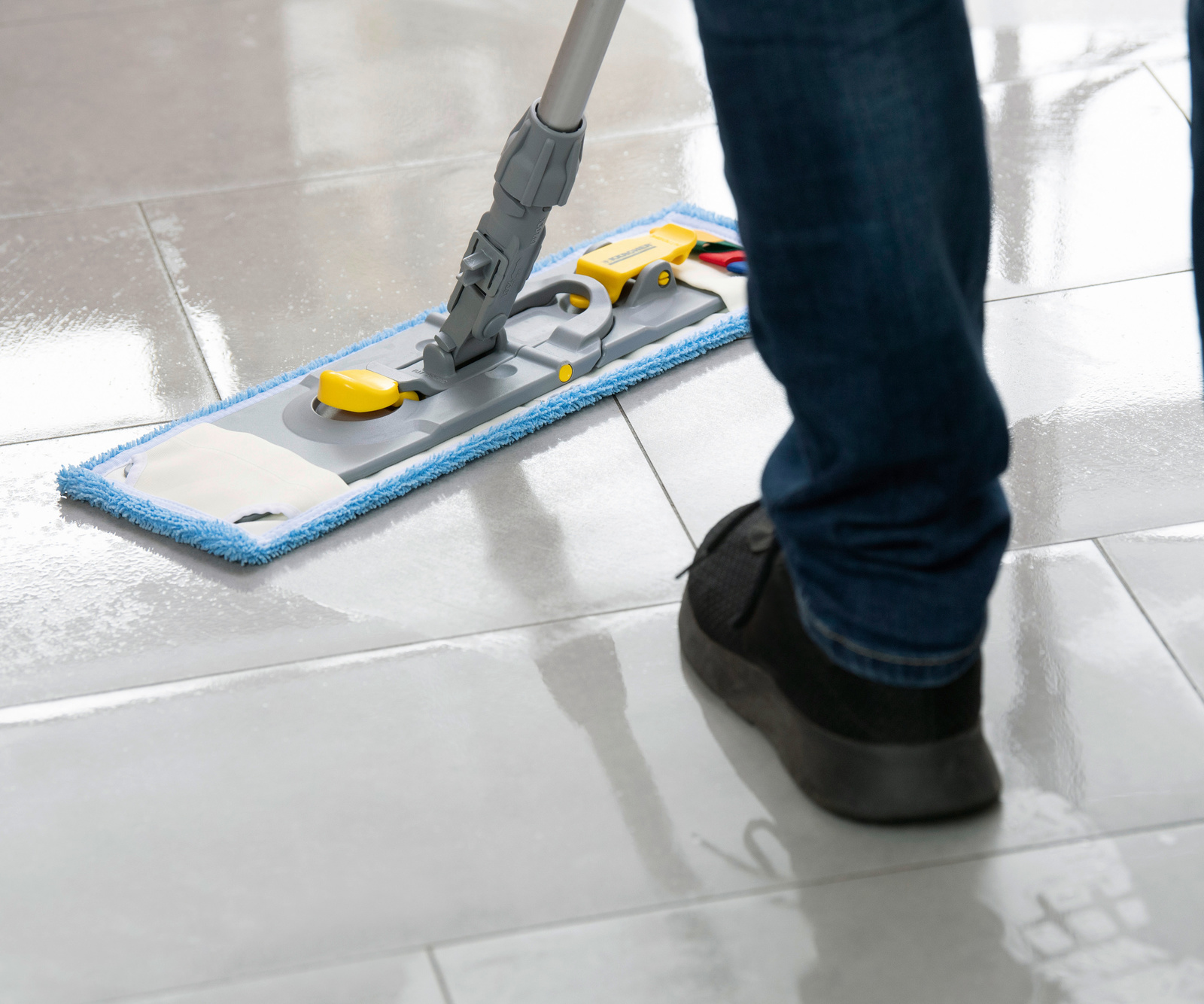
Removing lime film from tiles
It's not only in the bathroom where limescale can become a problem: Limescale can be an issue in areas with hard water, leading to a white lime film on tiles, particularly dark ones. Here's an improved method for removing lime film:
Preparation:
- Wet the tile joints with clean water to protect them from acidic cleaners.
Cleaning Solution:
- Use an acidic sanitary cleaner, vinegar, or citric acid.
- Dilute the cleaner as per instructions.
Application:
- Apply the solution with a scrubber.
- Let it sit for about five minutes, scrubbing intermittently without letting it dry.
Rinsing:
- Wipe the surface with a floor wiper or mop and clean water.
- Change the water several times to remove all detergent residue.
For light lime films, a couple of wipes with an acidic cleaner followed by a rinse may suffice.
Steam cleaner for tile floor
Steam cleaners offer a hygienic alternative to mechanical floor wipers, eliminating up to 99.99% of bacteria and viruses without chemicals. Their high temperatures loosen stubborn dirt and grease, making them ideal for kitchens. Steam cleaners are perfect for allergy sufferers and families with young children, as they leave no lime residue or streaks, and the floor dries quickly.
Steps for Effective Cleaning:
- Prepare the Steam Cleaner: Use suitable microfiber covers for fine stoneware tiles.
- Steam Cleaning Technique: Move the nozzle side to side in overlapping strokes.
- Replace Dirty Covers: Regularly change the covers to ensure effective dirt absorption.
- Cleaning Joints: Move the nozzle up and down, then side to side, for thorough cleaning.
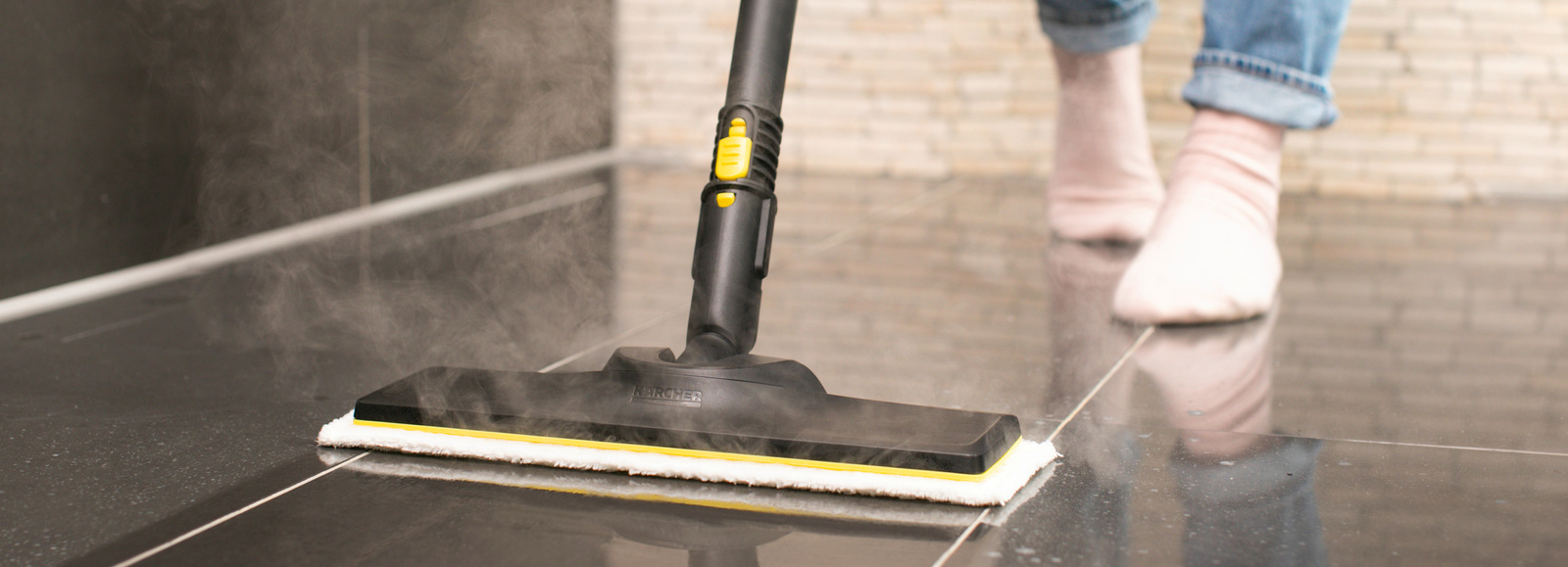
Quick and easy: Electric floor cleaner
Floor tiles are cleaned particularly quickly and thoroughly with an electric floor cleaner. The cleaning rollers on the devices rotate at 500 turns per minute and effortlessly loosen stubborn dirt. The dirty water is collected in a separate tank so that you always use fresh water when wiping. The FC 7 Cordless even removes the loose dirt, meaning that the area does not need to be vacuumed beforehand. The specially tailored detergent RM 537 is suitable for tiles, stone and natural stone.









